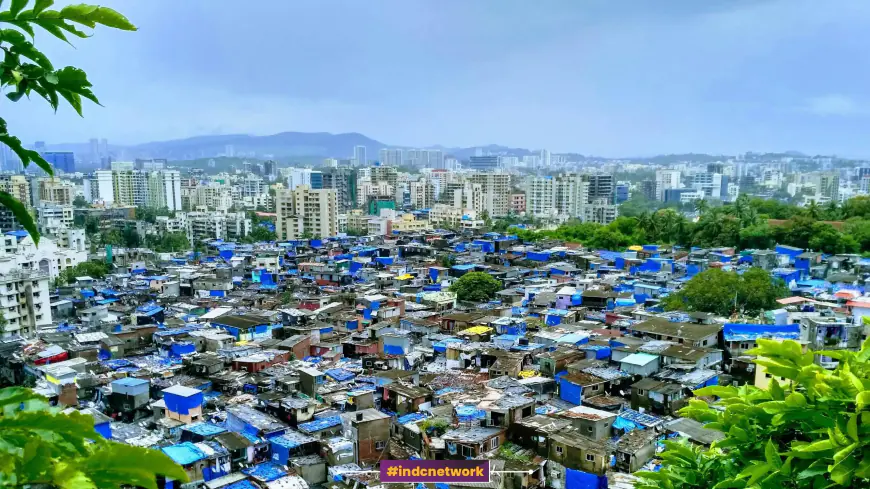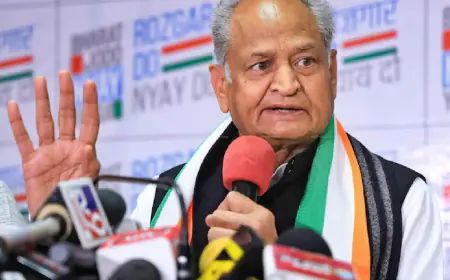Poverty and Income Inequality: Understanding the Roots of Global Disparity
Poverty and income inequality are two of the most pressing challenges facing the world today, deeply intertwined in a cycle that perpetuates economic and social disparities. This article explores the complex relationship between poverty and income inequality, examining the causes, consequences, and potential solutions. By delving into the roles of globalization, policy, education, and social systems, the article seeks to uncover the multifaceted nature of these issues and highlight the importance of collective action in addressing them.

INDC Network : Social Issues : Poverty and Income Inequality: Understanding the Roots of Global Disparity
Introduction : Poverty and income inequality are two of the most enduring and pervasive challenges in the modern world. Despite significant advances in technology, economic growth, and globalization, millions of people across the globe continue to live in conditions of extreme poverty, while income inequality continues to widen, particularly within and between nations. The relationship between poverty and income inequality is complex and multifaceted, rooted in historical, economic, social, and political factors that perpetuate disparities in wealth and opportunity.
Understanding the intricate dynamics between poverty and income inequality is crucial for addressing these global challenges. This article seeks to explore the root causes of poverty and income inequality, the impact these issues have on individuals and societies, and the potential solutions that can be implemented to promote greater economic justice and social equity.
Defining Poverty and Income Inequality
Before delving into the causes and consequences of poverty and income inequality, it is essential to define these concepts and understand how they are measured.
Poverty : Poverty is generally defined as the condition in which individuals or households lack the financial resources to meet their basic needs, such as food, shelter, clothing, education, and healthcare. Poverty can be categorized into two types: absolute poverty and relative poverty.
-
Absolute poverty refers to a fixed standard of living below which individuals are unable to meet their basic needs. The World Bank defines extreme poverty as living on less than $1.90 per day, a threshold that has been used to track global progress in reducing poverty.
-
Relative poverty is defined in relation to the average standard of living in a particular society. It refers to individuals or households whose income is significantly lower than the median income, leading to social exclusion and limited access to opportunities.
Income Inequality : Income inequality refers to the unequal distribution of income and wealth within a population. It is measured using various metrics, including the Gini coefficient, which ranges from 0 (perfect equality) to 1 (perfect inequality), and income quintiles, which divide the population into five equal groups to compare income distribution.
Income inequality can manifest in various forms, including disparities in wages, capital gains, and access to resources and opportunities. While some level of income inequality is inherent in any economy, excessive inequality can have detrimental effects on social cohesion, economic stability, and individual well-being.
The Global Landscape of Poverty and Income Inequality
The global landscape of poverty and income inequality is shaped by a complex interplay of factors, including historical legacies, economic policies, globalization, and technological change. While significant progress has been made in reducing poverty over the past few decades, particularly in developing countries, income inequality has widened in many parts of the world, contributing to growing social and economic disparities.
Trends in Poverty : According to the World Bank, global poverty rates have declined significantly since the 1990s, with the proportion of people living in extreme poverty (on less than $1.90 per day) falling from 36% in 1990 to about 9% in 2020. This progress has been driven largely by economic growth in emerging economies, particularly in East Asia and the Pacific, where countries like China have lifted hundreds of millions of people out of poverty.
However, despite these gains, progress in reducing poverty has been uneven, with significant disparities across regions and countries. Sub-Saharan Africa remains the region with the highest poverty rates, with nearly 40% of the population living in extreme poverty. In contrast, regions like Latin America and the Caribbean have seen more modest reductions in poverty, while the Middle East and North Africa have experienced setbacks due to conflict and instability.
The COVID-19 pandemic has further exacerbated global poverty, pushing millions of people back into extreme poverty due to economic disruptions, job losses, and reduced access to essential services. The World Bank estimates that the pandemic has added between 88 million and 115 million people to the ranks of the global poor, reversing years of progress in poverty reduction.
Trends in Income Inequality : While poverty rates have declined, income inequality has increased in many parts of the world, particularly in high-income countries. According to the Organization for Economic Cooperation and Development (OECD), income inequality has risen in nearly all OECD countries over the past three decades, with the top 10% of earners capturing a growing share of national income.
In the United States, for example, the share of income held by the top 1% has more than doubled since the 1980s, while wages for middle- and lower-income workers have stagnated. Similar trends can be observed in other developed countries, where the gap between the rich and the poor has widened, leading to increased social and economic polarization.
In developing countries, income inequality is often even more pronounced, driven by factors such as unequal access to education, healthcare, and economic opportunities. In some cases, income inequality has been exacerbated by globalization, which has led to rapid economic growth in certain sectors or regions while leaving others behind.
The Causes of Poverty and Income Inequality
The causes of poverty and income inequality are complex and multifaceted, involving a combination of economic, social, political, and historical factors. While each context is unique, several key drivers can be identified as contributing to the persistence of poverty and the widening of income inequality.
Economic Factors
-
Unemployment and Underemployment: One of the primary economic drivers of poverty and income inequality is unemployment and underemployment. When individuals are unable to find work or are employed in low-wage, insecure jobs, they are more likely to experience poverty and income inequality. In many developing countries, the informal economy accounts for a significant share of employment, often characterized by low wages, poor working conditions, and lack of social protection.
-
Globalization and Technological Change: Globalization and technological change have had mixed effects on poverty and income inequality. On the one hand, globalization has contributed to economic growth and poverty reduction in many developing countries by opening up markets, attracting foreign investment, and creating new job opportunities. On the other hand, globalization has also led to increased income inequality, particularly in developed countries, as low-skilled jobs are outsourced to lower-wage countries, while high-skilled jobs become more concentrated in certain regions or industries.
Technological change, particularly automation and digitalization, has also played a significant role in shaping income inequality. While technological advancements have increased productivity and created new opportunities, they have also displaced low-skilled workers and contributed to the polarization of the labor market, with high-skilled workers reaping the benefits while low-skilled workers are left behind.
-
Economic Policies and Taxation: Economic policies and taxation play a crucial role in shaping income distribution and poverty levels. In many countries, regressive tax systems, inadequate social safety nets, and labor market policies that favor capital over labor have contributed to rising income inequality and persistent poverty. For example, in the United States, tax cuts for the wealthy and corporations, combined with cuts to social programs, have exacerbated income inequality and reduced support for low-income households.
Conversely, progressive taxation, social welfare programs, and policies that promote labor rights and collective bargaining can help reduce income inequality and alleviate poverty. Countries with strong social safety nets, such as those in Scandinavia, tend to have lower levels of income inequality and higher levels of social mobility.
Social Factors
-
Education and Skills: Education is one of the most significant determinants of income inequality and poverty. Individuals with higher levels of education and skills are more likely to secure well-paying jobs and experience upward mobility, while those with lower levels of education are more likely to be trapped in low-wage, insecure employment. In many developing countries, access to quality education is limited, particularly for girls, rural populations, and marginalized communities, contributing to persistent income inequality and poverty.
-
Healthcare and Social Services: Access to healthcare and social services is another critical factor influencing poverty and income inequality. Poor health can lead to reduced productivity, job loss, and increased medical expenses, pushing individuals and families into poverty. In many countries, inadequate healthcare systems, lack of social protection, and high out-of-pocket expenses exacerbate income inequality and limit opportunities for upward mobility.
Social services, such as childcare, housing, and food assistance, also play a crucial role in alleviating poverty and reducing income inequality. In countries where social services are underfunded or inaccessible, low-income households are more likely to experience financial strain and social exclusion.
-
Social Mobility and Inequality of Opportunity: Social mobility refers to the ability of individuals or households to move up or down the income ladder over time. In societies with high levels of social mobility, individuals have more opportunities to improve their economic status, regardless of their background. In contrast, societies with low levels of social mobility are characterized by entrenched income inequality and limited opportunities for upward mobility.
Inequality of opportunity, such as unequal access to education, healthcare, and employment, is a key driver of low social mobility and persistent income inequality. When opportunities are concentrated among certain groups or regions, it perpetuates a cycle of poverty and inequality that is difficult to break.
Political Factors
-
Governance and Institutions: Governance and institutions play a critical role in shaping income inequality and poverty. In countries with weak institutions, corruption, lack of accountability, and ineffective governance can exacerbate income inequality and limit access to essential services. Poor governance can also undermine economic growth, reduce investor confidence, and increase social unrest, further entrenching poverty and inequality.
Conversely, strong institutions, transparent governance, and effective rule of law can promote inclusive economic growth, reduce income inequality, and alleviate poverty. Countries with strong governance and institutions tend to have lower levels of income inequality and higher levels of social cohesion.
-
Political Power and Influence: Political power and influence are closely linked to income inequality and poverty. In many countries, economic elites wield significant political power, influencing policy decisions that favor their interests at the expense of the broader population. This can lead to policies that exacerbate income inequality, such as tax cuts for the wealthy, deregulation of labor markets, and cuts to social programs.
The concentration of political power among the wealthy can also undermine democratic processes, limit civic participation, and reduce accountability, further entrenching income inequality and poverty.
Historical Factors
-
Colonialism and Historical Injustice: The legacy of colonialism and historical injustice continues to shape patterns of poverty and income inequality in many parts of the world. Colonialism often involved the extraction of resources, exploitation of labor, and imposition of social hierarchies that left lasting economic and social disparities. In many former colonies, these disparities persist today, with marginalized communities disproportionately affected by poverty and income inequality.
-
Discrimination and Social Exclusion: Discrimination and social exclusion based on race, ethnicity, gender, caste, or religion are significant drivers of poverty and income inequality. In many societies, marginalized groups face barriers to education, employment, and social services, limiting their opportunities for upward mobility and perpetuating cycles of poverty and inequality.
The Consequences of Poverty and Income Inequality
The consequences of poverty and income inequality are far-reaching, affecting not only individuals and families but also entire societies and economies. These consequences can be seen in various dimensions, including health, education, social cohesion, and economic stability.
Health and Well-being : Poverty and income inequality have profound impacts on health and well-being. Individuals living in poverty are more likely to experience poor health, malnutrition, and limited access to healthcare. This, in turn, can lead to reduced life expectancy, higher rates of infant and maternal mortality, and increased vulnerability to diseases.
Income inequality also contributes to health disparities, with wealthier individuals typically enjoying better health outcomes than those with lower incomes. Research has shown that societies with high levels of income inequality tend to have worse overall health outcomes, including higher rates of chronic diseases, mental health issues, and premature death.
Education and Human Capital : Poverty and income inequality have significant implications for education and human capital development. Children from low-income households are less likely to have access to quality education, leading to lower levels of educational attainment and limited opportunities for upward mobility. This perpetuates the cycle of poverty and inequality, as individuals with lower levels of education are more likely to be employed in low-wage jobs and experience economic insecurity.
Income inequality also affects the distribution of educational opportunities, with wealthier families able to invest more in their children's education, including private schooling, tutoring, and extracurricular activities. This creates disparities in educational outcomes and limits social mobility, contributing to the persistence of income inequality.
Social Cohesion and Stability : High levels of poverty and income inequality can undermine social cohesion and stability, leading to increased social tensions, crime, and political instability. In societies with wide income disparities, there is often a sense of injustice and frustration among those who feel left behind, leading to social unrest and conflict.
Income inequality can also erode trust in institutions and reduce civic participation, as individuals lose faith in the ability of the government and other institutions to address their needs and promote social justice. This can lead to a breakdown in social cohesion and a decline in social capital, further exacerbating the challenges of poverty and inequality.
Economic Growth and Development : Poverty and income inequality have significant implications for economic growth and development. High levels of income inequality can reduce economic growth by limiting access to education and healthcare, reducing social mobility, and increasing social tensions. When large segments of the population are excluded from economic opportunities, it can lead to underinvestment in human capital and reduced productivity, limiting the potential for economic growth.
Conversely, reducing poverty and income inequality can promote inclusive economic growth by expanding access to education, healthcare, and economic opportunities. This can lead to higher levels of human capital development, increased productivity, and greater economic stability.
Addressing Poverty and Income Inequality: Potential Solutions
Addressing poverty and income inequality requires a comprehensive and multifaceted approach that involves economic, social, and political reforms. While there is no one-size-fits-all solution, several key strategies can be implemented to promote greater economic justice and social equity.
Economic Policies and Taxation
-
Progressive Taxation: Implementing progressive taxation, where higher-income individuals and corporations pay a larger share of taxes, can help reduce income inequality and generate revenue for social programs. This can include taxes on income, wealth, capital gains, and inheritance, as well as closing tax loopholes and reducing tax evasion.
-
Social Welfare Programs: Expanding social welfare programs, such as unemployment benefits, healthcare, childcare, and housing assistance, can help alleviate poverty and reduce income inequality. These programs can provide a safety net for low-income households and ensure access to essential services.
-
Labor Market Policies: Strengthening labor market policies, such as minimum wage laws, collective bargaining rights, and labor protections, can help improve wages and working conditions for low-income workers. This can reduce income inequality and promote social mobility.
Education and Human Capital Development
-
Access to Quality Education: Expanding access to quality education for all, regardless of income, race, or location, is essential for reducing income inequality and promoting social mobility. This includes investing in early childhood education, improving public schools, and providing scholarships and financial aid for higher education.
-
Skills Training and Vocational Education: Providing skills training and vocational education can help individuals develop the skills needed to secure well-paying jobs and adapt to changing labor market demands. This can be particularly important for low-skilled workers and those displaced by technological change.
Healthcare and Social Services
-
Universal Healthcare: Implementing universal healthcare systems that provide access to quality healthcare for all can help reduce health disparities and alleviate the financial burden of medical expenses. This can improve health outcomes and reduce poverty.
-
Social Services and Support: Expanding access to social services, such as childcare, housing, and food assistance, can help support low-income households and reduce income inequality. These services can provide stability and security, allowing individuals and families to invest in their future.
Governance and Political Reforms
-
Strengthening Institutions: Strengthening institutions and governance can help reduce corruption, increase accountability, and promote inclusive economic growth. This can create a more equitable distribution of resources and opportunities.
-
Political Participation and Representation: Promoting political participation and representation for marginalized groups can help ensure that policies are responsive to the needs of all citizens, not just the wealthy. This can lead to more equitable and inclusive policy decisions.
Global Cooperation and Solidarity
-
International Aid and Development: Providing international aid and development assistance to low-income countries can help reduce poverty and income inequality on a global scale. This can include funding for education, healthcare, infrastructure, and social protection programs.
-
Global Trade and Investment: Promoting fair and equitable trade and investment practices can help reduce global income inequality and promote sustainable development. This can include addressing trade imbalances, reducing debt burdens, and ensuring that multinational corporations pay their fair share of taxes.
Conclusion : Poverty and income inequality are complex and interrelated challenges that require a comprehensive and coordinated response. While significant progress has been made in reducing poverty over the past few decades, income inequality continues to widen in many parts of the world, exacerbating social and economic disparities.
Addressing these challenges requires a commitment to economic, social, and political reforms that promote greater economic justice and social equity. By implementing progressive taxation, expanding access to education and healthcare, strengthening institutions, and promoting global cooperation, we can create a more just and equitable world where all individuals have the opportunity to thrive.
The path to reducing poverty and income inequality is not easy, but the potential benefits—for individuals, societies, and the global economy—are immense. By working together, we can build a future where everyone has the chance to live a life of dignity, security, and opportunity.
What's Your Reaction?












































































































































































